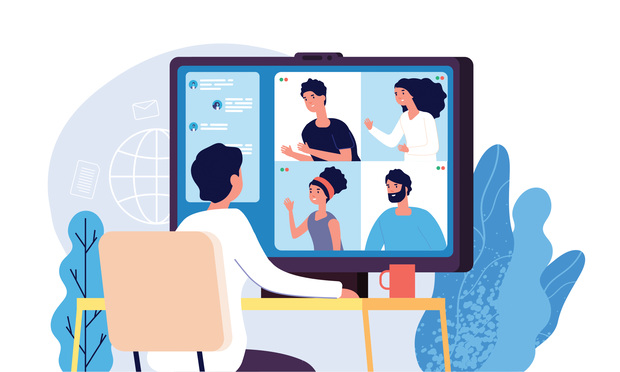 (MicroOne/Shutterstock)
(MicroOne/Shutterstock)
If employees are a company's greatest asset, communication is the number one tool that you can use to tap into and strengthen this resource. As we head into a new year, HR leaders should assess what communications strategies worked in 2022 and which did not work so they can get a jump start on their goals and anticipated changes in 2023. Consider a three-pronged approach to perfect your game place: evaluate what you have done in the past, invest in what succeeded and eliminate what failed.
Proactivity and communication
New rules and regulations caused by changing global conditions and political regimes shook the working world in 2022. The spread of COVID-19 abruptly introduced mask mandates, vaccination guidelines, social distancing and changes to work-related travel. Vaccine requirements varied at the state, city and office level, and HR managers had to inform employees about their testing, vaccines, social distancing and privacy stance. Another example includes the new wage transparency laws in New York City and other places in the U.S. There are new communication needs to address and answer questions from both New York-based workers and others in your company.
Recommended For You
Because of legal shifts, HR leaders had to update their workforce quickly, scramble to meet all the changing restrictions and brace for the impacts that they are continuing to feel in 2022. If your workplace rules shifted to adhere to legal or compliance changes, be proactive and give your employees ample time to prepare by communicating early and where they are: on their mobile devices. Using text, email, push notifications and traditional paper mail ensures that no one is left in the dark about upcoming changes and what they need to do to comply.
Also, benefits may change because of adaptations in the competitive landscape or new compliance requirements for leave and insurance coverage. You must offer ample communication and time to address any concerns as missing a deadline can be costly to both you and your employee.
Emphasize holistic wellbeing
Employee wellbeing is vital when keeping and building a strong company culture and cultivating new talent. However, a survey by Gympass found that 48%, or nearly half, of employees surveyed say their wellbeing declined in 2022. Pandemics, political anxieties, inflation, war and fear of recession are all major factors that are adding to workplace stress and contributing to a decrease in wellbeing, physically and mentally. There is a lot on employers' and workers' minds, and it is time to reemphasize that wellbeing comes first when broadcasting stress-mitigating benefits and rebuilding a stronger company culture.
Consider physical fitness. One study found that gym memberships and healthy lifestyle incentives were among the top five non-insurance benefits U.S. workers seek. Additionally, moving into 2023, there will be a resurgence in physical fitness, financial wellness and mental wellbeing as people consider their resolutions for the year.
As an HR leader, you have designed a benefits package that prioritizes company-wide health and can address each of these components, with financial planning resources, exercise and nutrition regiments and mental health coaching, so communicate these benefits to your employees. This could look like sending an informative email directing workers to their fitness resources, encouraging outdoor breaks for workers to get fresh air or providing one-on-one health coaching with a professional. No matter the resource, sending a reminder to tap into their HR app to achieve their personal goals is vital in engaging your workers and retaining talented workers.
You can also connect employees as a method to build your culture. For instance, employees that are interested in training for a half-marathon can establish a separate communications group to bond over their training regimen and goals. It is an effortless way to facilitate stronger bonds across remote, in-person and hybrid employees.
Notification fatigue
In today's digital world, companies are competing for their employees' attention but need to be careful not to overwhelm or distract employees with too many notifications. A majority of workers in the U.S. are overwhelmed by notifications and feel the need to respond immediately, according to an Asana study, and HR should be mindful of how and when they message their workforce.
To avoid notification fatigue and losing time-sensitive information, consider consolidating all work-related correspondence and resources in one place: a mobile app on your employee's device. This way, employees can opt-in to notifications that direct them to their personalized HR app and can tap in when they need, perhaps to access their wellness benefits or join a training webinar. Or you can establish a forum for employee feedback – this two-way channel builds relationships and transparency.
When you create a designated HR space, you won't flood work or personal emails with time-sensitive enrollment forms or less urgent priorities. Your HR app will improve productivity and avoid a negative reputation as a nuisance. However, be aware of how often you engage with your employees and the time of day you communicate with them. You don't want to receive a message on Christmas Eve about insurance, so I doubt your employees would either.
Self-assessment
As the year ends, it is important to assess what HR communications strategies worked, and what didn't. Maybe your HR communications plan met the demands of the global and economic shifts, or perhaps you were struggling to stay afloat. Either way, a new year provides an opportunity to press the reset button and implement new communications strategies for HR.
Dinesh Sheth, Founder and CEO of Green Circle Life
© 2025 ALM Global, LLC, All Rights Reserved. Request academic re-use from www.copyright.com. All other uses, submit a request to [email protected]. For more information visit Asset & Logo Licensing.







